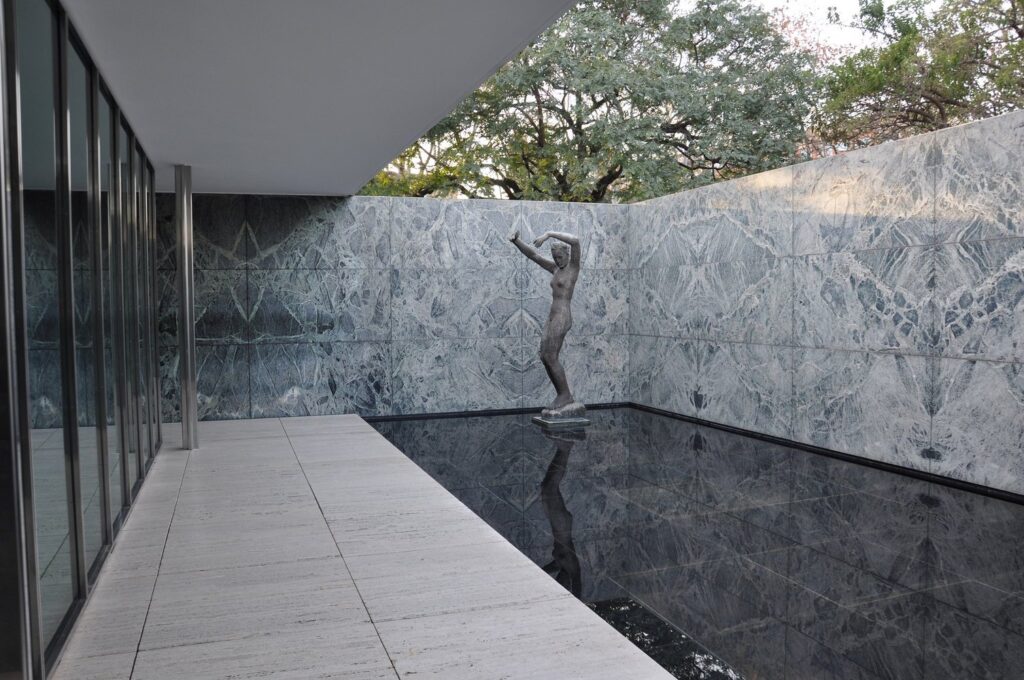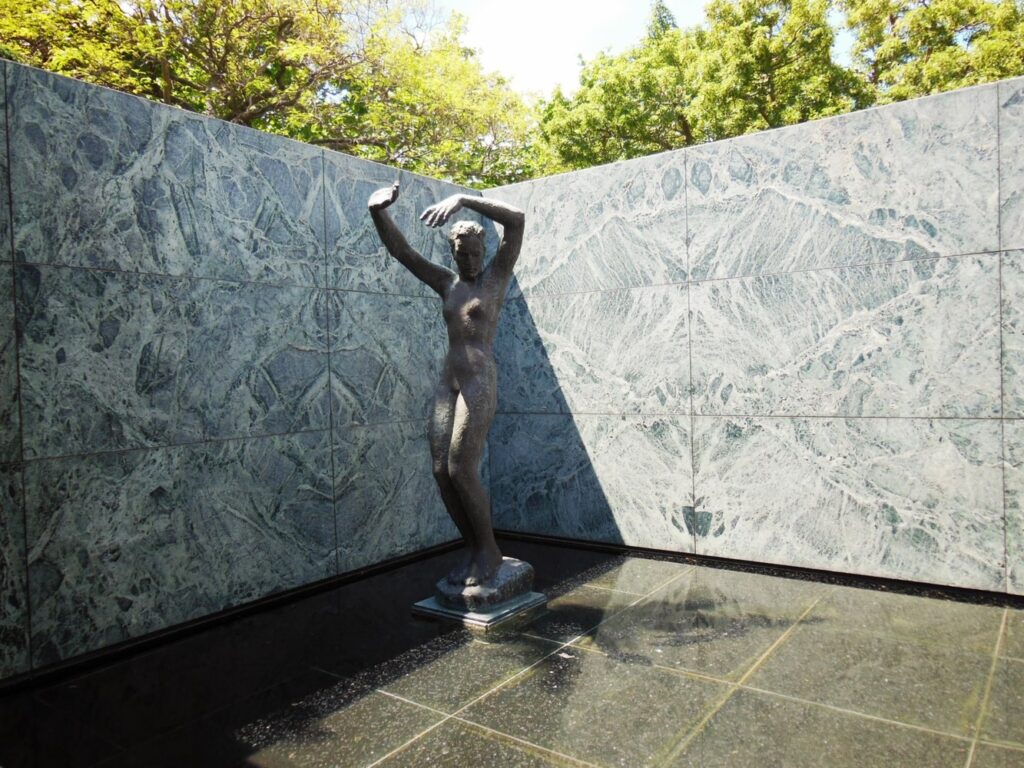
The idea of integration between art and architecture dates back to the very origin of the discipline, however, it took on a new meaning and social purpose during the Avant-Garde movement of the early twentieth century, becoming one of the most defining characteristics of Modernism. This close relationship is evident in the works of some of the greatest modern architects, such as Mies van der Rohe, Le Corbusier, and Oscar Niemeyer, to name a few.
Needless to say, modernism emerged from an expectation of moral and material reconstruction of a world devastated by war, serving as a tool to strengthen a collective identity and, consequently, the bond between the city and its inhabitants. In this context, artistic expression is used as a tool to shape the emotional life of the user, to which art and architecture combined can give a new meaning, offering a place that represents a sense of community, in addition to function and technique.
The professional development at Bauhaus was marked by what Argan (1992) calls “methodological-didactic rationalism,” encouraging the unification of all the arts through a Gesamtkunstwerk, which roughly translates as a “total work of art,” incorporating architecture, painting, sculpture, industrial design, and crafts. This collaboration was expected to happen even on the building site, thus bringing together intellectual and manual work in a shared experience. As their leading exponent Walter Gropius used to say, an architect should be as familiar with painting as a painter should be with architecture. One should not design a building and commission a sculptor afterward; this would be wrong and detrimental to the architectural unity.
On a different scale but equally important, is integration between art and architecture through the inclusion of occasional individual elements such as the iconic Barcelona Pavilion by Mies van der Rohe. Indeed, the sculpture Der Morgen, also known as Alba, by German sculptor Georg Kolbe (1877-1947) is not essential to the pavilion. But what else is essential in this new architectural concept, if not only the arrangement of planes and vertical supports? The pavilion is completely independent of the sculpture, as well as of the materials however, one cannot picture it today without this human figure with arms outstretched precisely positioned and framed for the user’s experience. As Claudia Cabral beautifully explains, “in Mies’ delicate balance, guided by partial asymmetries, and by a system of compensations, the sculpture is the only element that has no counterpart […] Mies decided to place only one sculpture, a single figurative element in his abstract plane. Within the pavillions play with reflections, transparency, and parallels, we are the only possible partners for the bronze figure, we humans of flesh and blood, the visitors.”

Every form of integration of different disciplines consists of a coherent dialogue between architects, painters, and sculptors, whether from the very beginning of the project development or later on, during construction, whether on a large scale or with individual elements. Having this in mind, it is very alarming to witness events such as the relocation of the panels by artist Athos Bulcão in the Planalto Palace in Brasilia in 2009 due to a renovation. Even the Athos Bulcão Foundation – Fundathos opposed it since the original location was defined by Athos himself, along with Niemeyer while he was designing the palace in 1950.
As Rino Levi once said, architecture is not secondary, but neither is it the mother of all arts. There is only one art and its value is measured by the emotions it triggers in us. Painting and sculpture can be independent, however, when applied to architecture, they become part of a whole. This lesson on collectivity and shared experiences starts during project development and touches every single person who has the opportunity to visit the architectural work.

